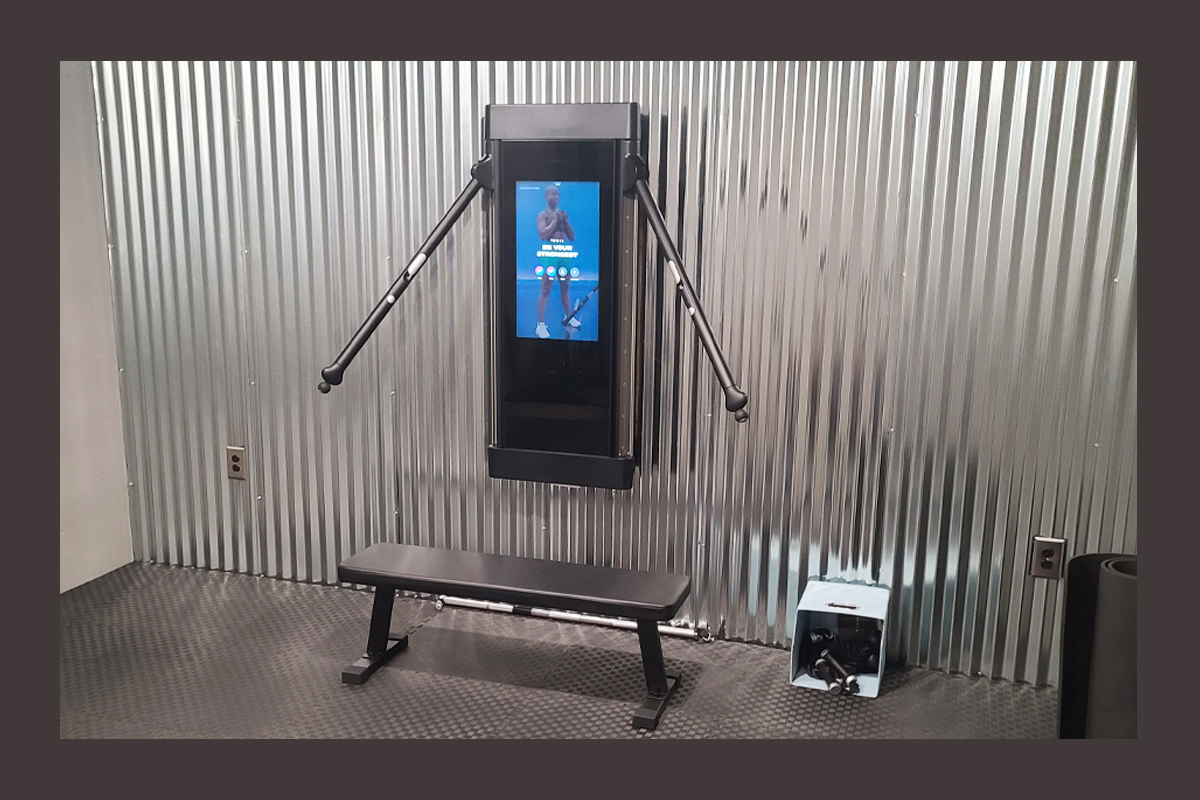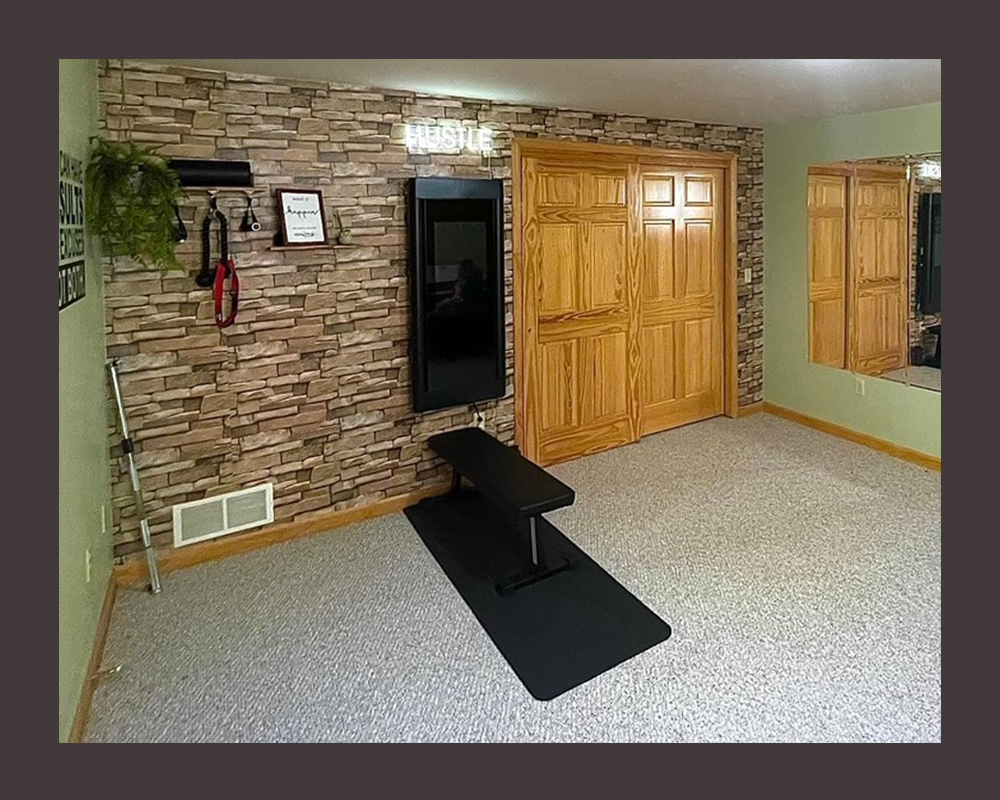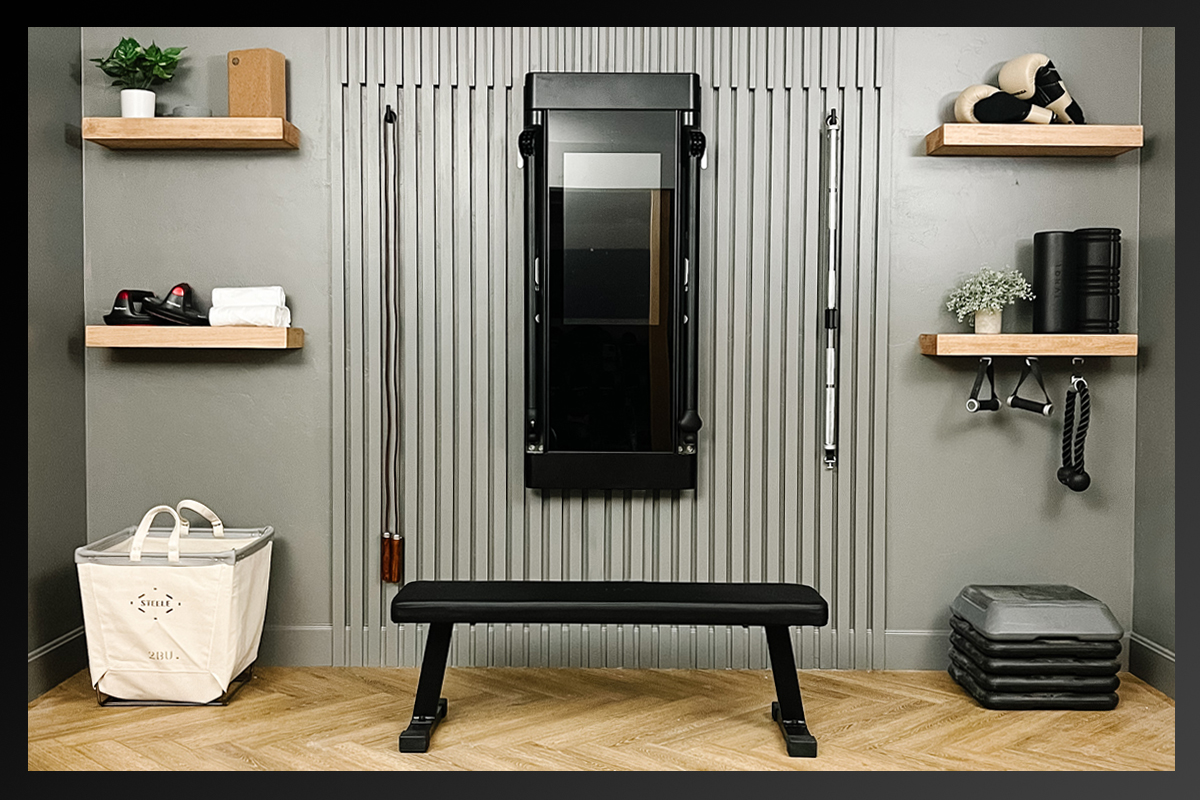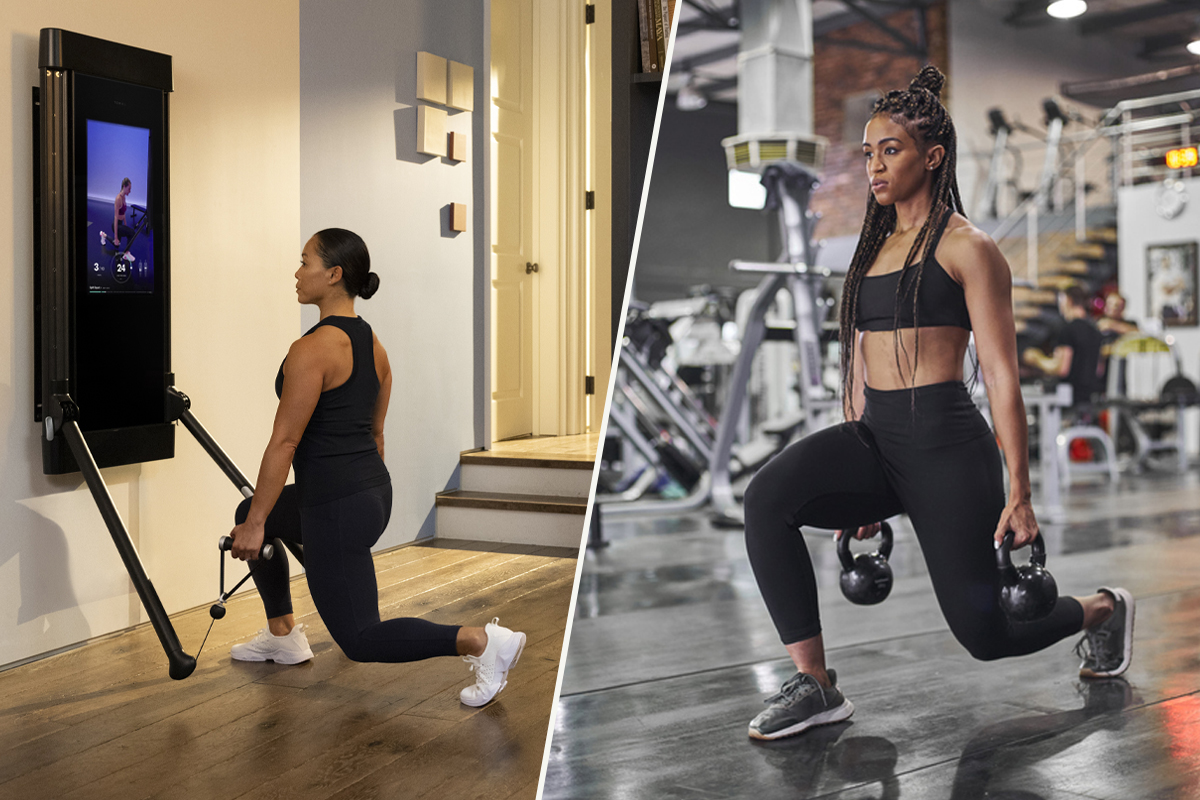Tonal members share why they love their basement gyms—and how they designed their perfect workout rooms.

A basement home gym feels just separate enough from the rest of the house that “commuting” there can help you get into a workout mindset—without actually leaving home. Being tucked away in a space that’s just for fitness was the allure for Tonal member Drew Peters of Marshall, Michigan.
“My wife likes the idea of ‘going to the gym,’” says Peters. “For me, it is a quiet, cool place to go at the end of the day.”
For others, the basement is often simply the only available space in the house to set up a gym.
Dan Reiss, a Tonal member from Cherry Hill, New Jersey, says a basement home gym was the best solution for creating a workout space with a growing family. He and his wife moved their Tonal to the basement when they found out they were expecting their second son.
“At the time, our Tonal was in the room next to our bedroom which was going to become the nursery,” says Reiss. “I like to work out around 5:30 to 6 a.m., and trying to do burpees quietly while also keeping the music low so as to not wake up my wife or our son was starting to get a bit annoying.”
Erika Brown of Appleton, Wisconsin, a fellow parent and Tonal member, appreciates that her basement home gym, similar to a garage gym, gives her a dedicated space to exercise without having to leave home. “I love that I can access my gym at any time to stay consistent with my goals,” she says. “But the best part is that if my kids are home from school for any reason, I can still get a workout in and I don’t have to worry about finding a babysitter.”
Can I Put a Home Gym in My Basement?
Although basement home gyms are an excellent option, it’s important to first make sure your basement meets some basic requirements.
“It’s generally at least 5 degrees cooler in the basement,” says Peters. While, for him, this makes below ground “a great place to sweat,” for others, this might be a dealbreaker. If you live somewhere with very cold winters, that 5-degree drop could be enough to give you an excuse to stay upstairs where it’s warm and cozy instead of getting your workout in.
If that’s an issue, consider insulating your basement walls. That’s what Reiss did in his basement to ensure it’s always a comfortable temperature.

As with any home gym location, you’ll want to check that your basement space has enough room to fit all your equipment and for you to move around. In basements, ceiling height tends to be the limiting factor as they’re generally lower than in regular rooms.
If you’re looking to install a Tonal in your basement, you’ll need a ceiling height of 7 feet 10 inches to extend Tonal’s arms to their highest position. If your basement ceiling is a little lower, you’ll still be able to do all the moves in the movement library with a minimum height of 7 feet.
The basement may not be the best location for a home gym if you live in an area that regularly experiences flooding. You don’t want to risk losing your expensive equipment to water damage or having to miss your workout anytime there’s a storm.
How Do I Turn My Basement into a Gym?
Once you’re confident your basement is the best location for your home gym, it’s essential to design the space so it’s somewhere you actually want to work out.
“Make that room your own to keep you motivated,” says Brown. “For me, I decided to paint the room and add an accent wall to make it unique. I love nature so this is why I went for the sage green wall color and added plants as decor.”
Peters and his wife, Diane, took a different approach with their corrugated steel paneling wall. “It is strictly decorative, but worked well for the industrial look we were going for,” he says. To ensure their Tonal could be installed on the same wall, they first installed a stud wall and then added a panel of oriented strand board wood on the spot their Tonal would be mounted. You can find more information on the types of wall material on which Tonal can be installed here.

Don’t ignore your floors, either. If you have an unfinished basement with concrete floors, add some extra padding for moves where you’re down on the ground. Reiss chose these rubber mats which, he says, also “make a world of difference” in absorbing noise.
Other small details can also help transform your basement into a gym. Reiss bought a pack of small white gym towels “for that gym feel and convenience,” and lined his Tonal with LED light strips to amp up the energy of his workouts. Brown found these affordable full-length mirrors to help her space feel more like a real gym and let her keep an eye on her form.
Since Reiss moved his Tonal to the basement primarily to not disturb his family, he also bought this portable Bluetooth speaker so he could pump up his workout jams. “[It] has nice bass and connects well with Tonal,” he says. “Being in the basement lets me crank the music early in the morning and not worry about waking anyone up.”


